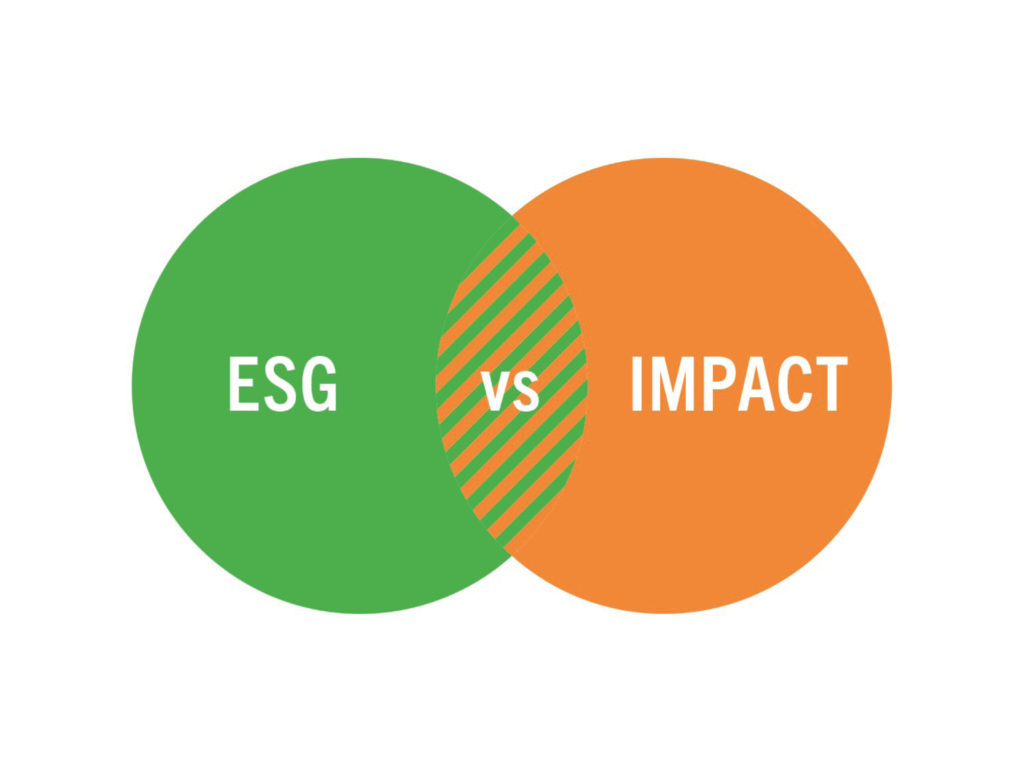The difference between ESG and Impact

The strength of impact investment strategies lies in the clarity of the goal: to invest in well-run businesses seeking to solve global problems. Many
Environmental, Social and Governance (ESG)
Environmental, Social and Governance (ESG)
Like impact strategies, ESG strategies have an innate insight at their core. They favour management teams which are thinking beyond the next quarter’s earnings and considering the possible operational risks that could arise from their business’ position and interaction with the wider world. In a purely monetarist, free-market system, ESG considerations would have limited appeal, governments would be unlikely to hold businesses to account for their poor polluting, working or management practices and so investors would be unlikely to take notice.
Since no company operates in such a theoretical vacuum, ESG has become a powerful framework for businesses to consider their operational risks using a shared language, which has been developed with investors. This provides shareholders with a more detailed gauge of the business’ awareness and treatment of certain risks.
A reliance on ESG data in isolation, however, has significant limitations. The biggest “risk” being assertions of “sustainability”, “responsibility” or “impact” obtained from a single, publicly available ESG data source. Even Investopedia makes the mistake of assuming that funds with high ESG scores are automatically impact funds. They aren’t.
Genuine
Sustainability
We’ve seen examples of businesses that would never be recognised as responsible or sustainable – due to certain business practices which would be identified and flagged in the impact due diligence process – appearing in active and passively managed funds under an ESG banner. This has occurred across industries, from the financial sector – a bank getting exemplary scores for governance but investing billions of dollars into Tar Sands exploration businesses for example, to within the retail clothing sector, where large gaps in data and scrutiny on both the environmental and social impact of production were overlooked.
From this, problems arise in both hoped-for impact and financial returns. This misrepresentation is misleading and opens investors up to the exact risks they were seeking to protect themselves against with a sustainable investment strategy. It’s, therefore, important false comfort isn’t taken in ESG data’s “protective blanket” and a business’ strategy is interrogated in a more holistic manner.
Whilst the goal is clear, the data isn’t always. As impact investors, we’re searching for businesses whose products and services are working towards positive change, and at Tribe we use the UN SDGs as our framework to help us towards that goal. Unlike ESG, impact isn’t silent on what a company does. Without a solid understanding of
Intentionality



